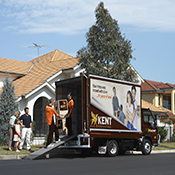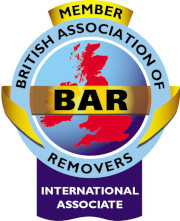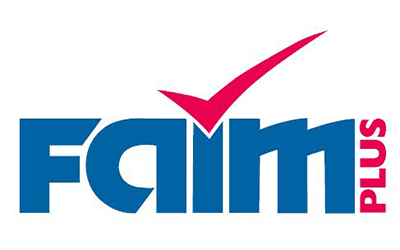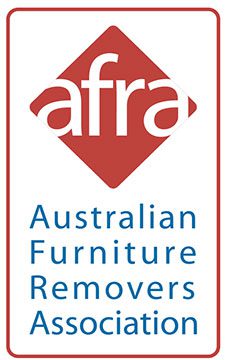You can download a handy printable version of this Moving House Do’s and Don’ts Checklist at the bottom of this page.
Moving House Do’s and Don’ts from Kent Removals will help keep you and your family safe while moving house. Kent takes moving house safety seriously. Moving dangerous goods can affect your family, Kent’s team of professional removalists, and anyone that comes in close contact with your consignment—even other road users. Moving house safely and responsibly protects everyone, and offers added peace of mind.
Kent Removals will ask whether you plan on moving dangerous goods. But, we can’t be there while you’re DIY packing, or if you take on moving house yourself. To stay safe, follow these moving do’s and don’ts, plus our guide to moving dangerous goods.
Use Kent Removals’ moving house checklists for extra help. Or better still, talk to us about your local move, interstate move or international relocation and how we can make moving safe and stress-free, for your peace of mind.
Moving Dangerous Goods
In Australia, the Dangerous Goods Act 1985 governs moving dangerous goods and transport of hazardous goods. Under the act, Kent Removals is prohibited from moving substances that are corrosive, flammable, explosive, spontaneously combustible, toxic, oxidising or water-reactive.
Please ensure no prohibited, dangerous goods (as per the definition above) are included with your consignment. This limits the chance of associated damage to your valued treasures, and greatly reduces the risk of injury to your loved ones, the general public, and our team of professional removalists.
Prohibited Moving Items
Our comprehensive list of prohibited moving items should help you determine whether you have moving house safety covered, for that extra peace of mind. Prohibited moving items include:
Explosives
- Ammonium Nitrate
- Calcium Hypochlorite
- Hydrogen
- Peroxide
- Sodium Nitrate
Corrosive Substances
- Caustic Soda
- Hydrochloric Acid
- Oxides
- Sulphuric Acid
Poisonous and Toxic Substances
- Detergents
- Arsenic
- Liquid Polishes
- Pesticides
- Radioactive Materials
- Weedkillers
- Any item with visible signs of mould
Miscellaneous
- Aerosol Cans
- Car Batteries
- Chemistry Sets
- Fire Extinguishers
- Firearms
- Gas Cylinders
- Home Soft Drink Makers
- Igniters
- Life Rafts
- Pressurised Vessels
- Propane Tanks
- Scuba Tanks
- Spear Guns
Exceptions to Moving Dangerous Goods
It is possible to move some dangerous goods safely, provided that correct packing techniques are used:
- LPG Gas Bottles. Moving safely means LPG gas bottles must be completely empty and packed a safe distance away from ignition sources
- Lawn Mowers and Gardening Equipment. To be moved safely, motorised machinery must be emptied of all fuel and oil
- Scuba Tanks. Moving these dangerous goods is possible, provided that scuba tanks are completely empty and valves are either open or removed
- Hand Guns. Some weapons (such as replicas, air rifles and non-automatic hand guns) can be safely moved if the firing mechanism and any live ammunition is removed.
Moving House Safety Tips
Packing Safely
For a complete DIY packing guide, download Kent Removals Moving House Packing Tips. Below are some special pack-your-own safety tips for moving house:
- Correct weight. Avoid overloading moving boxes. Keep carton weight 20kg or less
- Fit for purpose. Choose the right moving carton for the job
- Tape it up. Secure the top, bottom and sides of every moving carton with safety tape
- Sharp items. Use extra padding for sharp items and take care they don’t protrude from your box
- Best left behind. Keep paint cans, acid and flammable items like petrol and thinners out of the packing
- It’s a gas. LPG gas bottles should only be packed if certified as empty by a gas specialist.
Moving Do’s and Don’ts
Use these moving house do’s and don’ts to tackle all or part of your own home moving:
- Plan your access. Before you start moving house, check around for safety hazards like tree branches, puddles, low walls, gates and poles
- Delegate jobs. Organise your team so everyone has a role. This helps avoid collisions and people getting in one another’s way
- Clear the decks. So you can move safely, clear high-traffic areas of any obstacles. Set aside heavier boxes as well as lighter, more fragile items
- Get a grip. Wearing proper footwear would have to be our top moving house safety tip. Good strong boots protect your feet and prevent slipping. Similarly, work gloves protect your hands and provide a better grip
- Protect yourself. It might sound obvious, but moving safely means dressing the part. To avoid grazes, cuts and bruises, wear appropriate protective clothing
- Take your time. Injuries and accidents are much more likely in haste. Especially with large items like furniture, moving safely means leaving yourself adequate time
- Know the signs. Develop a set of clear signals you and your helpers can use to communicate. Otherwise funny situations can turn nasty fast
- Consider the weather. If you’re moving in the middle of summer, try to load up as early in the day as possible to avoid the heat, and don’t forget to apply sunscreen. If you’re moving in winter, then keep an eye on any rain clouds; wet weather can make surfaces slippery, cardboard moving boxes soggy, and damage furniture
- Back care. It might sound obvious, but always lift from your knees. If you’re prone to back problems, consider wearing a back brace on moving day. Back injury is the most common result of bending the moving house safety rules
- Fight fatigue. The biggest single cause of accidents and injury in any house move is tiredness. Plan several breaks during the day and allocate time for meals and refreshments so you can recharge. If your utilities have been disconnected (or not yet connected), be sure to have plenty of bottled water on hand
- Get a sitter. Moving safely means clear access. And that means organising someone else to care for little people and pets
- Right tool for the job. One of our hottest moving house safety tips is equip yourself correctly—you’ll be surprised home much time and trouble it saves. Hire, borrow or buy moving trolleys and have plenty of blankets on hand to protect walls and doorways from furniture scuff marks.
Moving furniture might seem simple enough. But moving safely involves thinking ahead to keep you and your removalists injury-free. Moving dangerous goods has specific legal implications. Don’t take a chance if you’re unsure about prohibited substances; ask Kent’s professional removalists. With over 70 years’ experience and more than 30,000 happy customers, Kent has a wealth of moving house do’s and don’ts to share.
Moving house do’s and don’ts checklist – Kent’s moving house safety tips icon

Kent’s moving house safety tips – the do’s and don’ts of moving image























